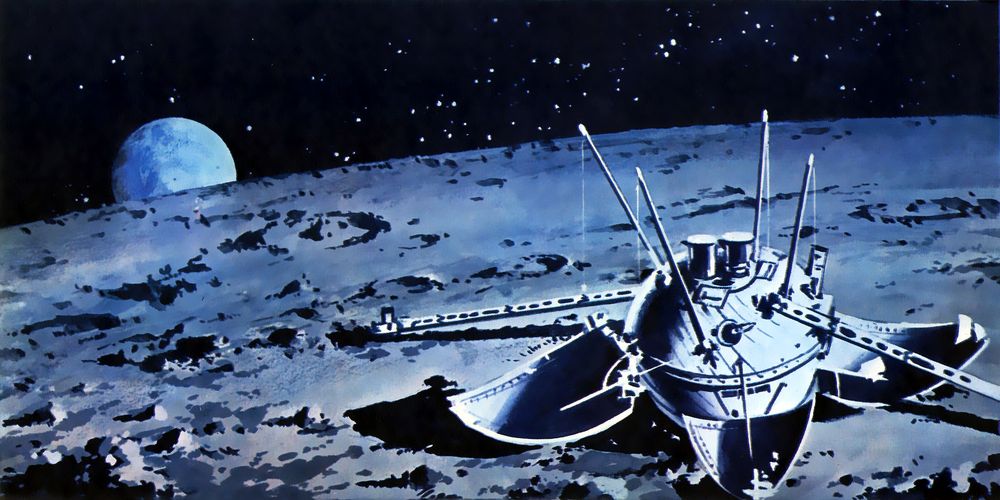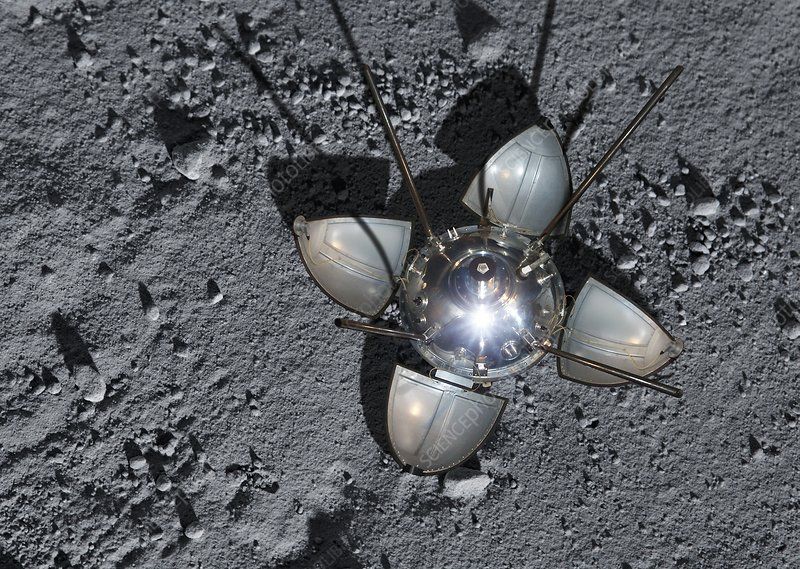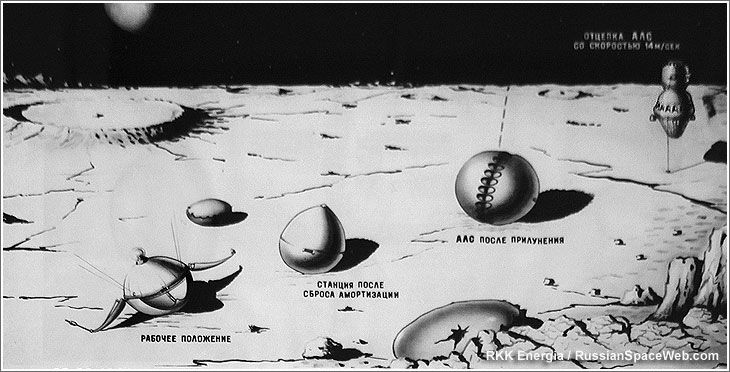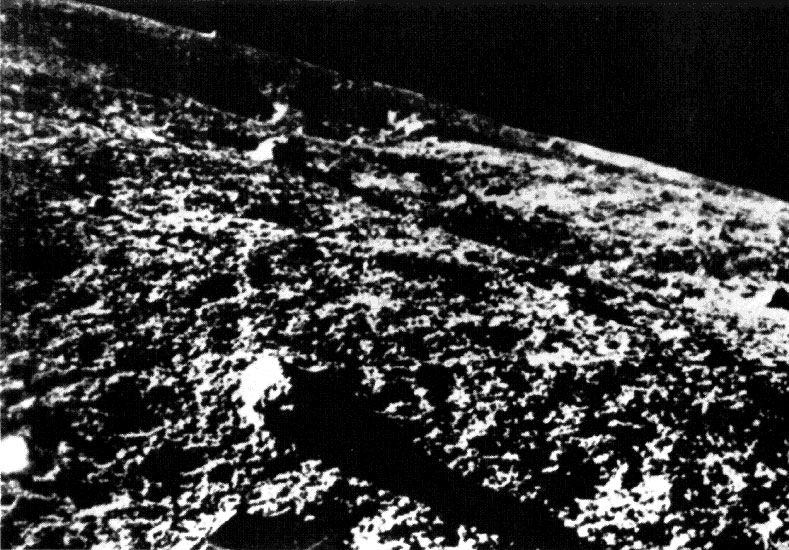The first spacecraft to achieve a survivable soft-landing on the moon was the Soviet unmanned spacecraft Luna 9. It was an exceedingly difficult milestone to reach, because making a soft landing required incredible precision. Luna 9 was also the first spacecraft to transmit photographic data from the Moon's surface to Earth. The probe also proved that the lunar surface could support the weight of a lander and that an object would not sink into a loose layer of dust as some experts had predicted.

Luna 9 on the lunar surface. Artwork by Dan Beaumont/Flickr
Luna 9 was the Soviet Union’s twelfth attempt to land on the moon. All the preceding eleven missions failed. Some failed to launch, two flew past the moon, and three made crash landings.
Luna 9 comprised of two parts and had a total mass of 1538 kg. The part that landed was a spherical body about 2 feet in diameter and a mass of 99 kg. It was a hermetically sealed container, which held the radio system, programming device, batteries, thermal control system and scientific apparatus. Four antennas that automatically opened after landing were mounted on the outside of the compartment. An airbag amortization system to cushion the landing was also mounted outside the station. The scientific equipment comprised a lightweight (1.5 kg) panoramic television camera and a radiation detector.
The Luna spacecraft was originally developed in the design bureau then known as OKB-1, under Chief Designer Sergei Korolev. After the failure of the first 11 Luna missions, the project was transferred to Lavochkin design bureau. Luna 9 was the first Lavochkin design. It was also the first successful deep space probe built by the Lavochkin design bureau, which ultimately would design and build almost all Soviet (later Russian) lunar and interplanetary spacecraft.

A model of the Luna 9 lander. Photo: Science Photo
The spacecraft launched successfully on January 31, 1966. The first three stages of the four-stage carrier rocket injected the payload into a low-earth orbit of 168 by 219 kilometers. The fourth stage then fired to raise the perigee of the orbit to a new apogee approximately 500,000 kilometers before deploying Luna 9 into a highly elliptical geocentric orbit. It took 6 days before the spacecraft finally reached moon.
Preparation for landing was carried out at an altitude of 8,300 km. Retro-rockets were fired to bring the spacecraft in the correct orientation. At 75 km altitude, the side modules were jettisoned and the air bags were inflated. At 250 meters from the surface the main retrorocket was turned off and the four outrigger engines were used to slow the craft. At a height of about 5 meters a contact sensor touched the ground, the engines were shut down, and the landing capsule was ejected. The capsule hits the surface inside an inflatable cocoon at a modest velocity of 22 km/hr, bouncing several times and coming to rest in Oceanus Procellarum. The impact time was recorded as 18:45:30 UT on February 3, 1966.

Landing scenario of the Luna-9 mission. Photo: Russian Space Web
About 250 seconds after landing, the deflated air bags were discarded and the top shell of the spacecraft opened like four petals. The petals pushed outwards and downwards to function like legs and helped stabilize the spacecraft on the lunar surface. A television camera and antennas popped open and began photographing the lunar surface. These first images were very poor quality because the sun was low. Only after seven hours, when the sun had climbed sufficiently high, did the contrast in the photographic images improved. The photographs were transmitted via seven radio sessions totaling 8 hours and 5 minutes. When assembled, the photographs provided four panoramic views of the nearby lunar surface.

The first photo ever taken from the surface of the Moon.
The first panoramic images arrived very early in the morning in Moscow. At that time, the curator of the Soviet space program Dmitriy Ustinov was sleeping, and officials were afraid to wake him up. This delayed permission required from Dmitriy Ustinov to publish the photographs in the Soviet media. Meanwhile, scientists at Jodrell Bank Observatory in England, which was monitoring the craft, noticed that the signal format used was identical to the internationally agreed Radiofax system used by newspapers for transmitting pictures. The Daily Express rushed a suitable receiver to the Observatory and the pictures from Luna 9 were decoded and published worldwide before the Soviet media could.
The only scientific instrument on board, the radiation detector, measured dosage of 30 millirads (0.3 milligrays) per day.
The spacecraft operated for 3 days before its batteries ran out and the mission ended.
The success of the Luna 9 mission provided a powerful impetus to the United States space program to carry out their own soft landing, which they did just four months later, eventually paving the way for the first landing of a human on the lunar surface.












Comments
Post a Comment